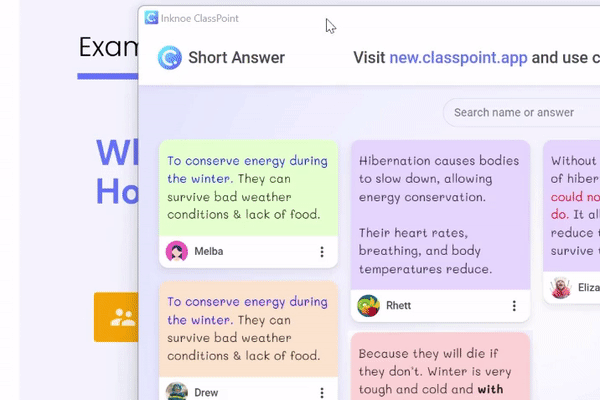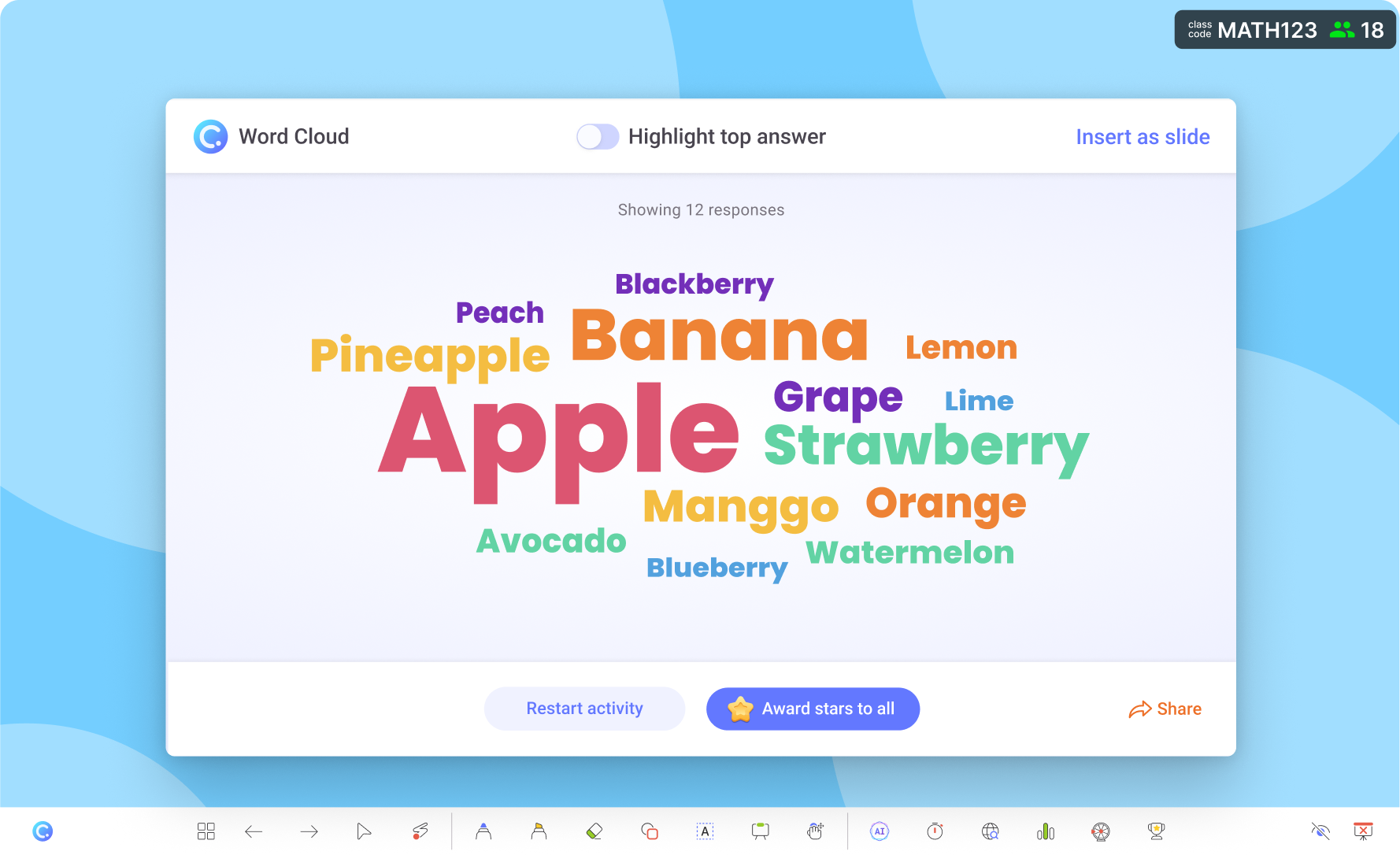Imagine teaching a child to walk. You offer your hands for balance, guide each step, and gradually let go as they find their footing. That’s the essence of scaffolding in education.
Just like the temporary structures used to support buildings under construction, scaffolding provides your students with the support they need while learning new skills or tackling complex concepts. Educators break lessons into manageable chunks, offering guidance, cues, and feedback along the way. As your students gain confidence and understanding, that support is slowly withdrawn until they are ready to do it on their own.
Scaffolding is not about doing the work for your students. It is about setting them up to succeed and stepping aside when they are ready to thrive independently.
Scaffolding Vs. Differentiation: What’s the Difference?
| Aspect | Scaffolding in Education | Differentiation |
|---|---|---|
| When it happens | During instruction | Before instruction |
| Purpose | Provide temporary support to build understanding | Tailor content or tasks to student readiness and needs |
| Duration | Gradually removed as students gain independence | Continues throughout planning and instruction |
| Example | Modeling how to write a paragraph step by step | Offering different reading levels for the same topic |
| Main focus | Helping students reach the same goal with guidance | Adjusting the path or product based on student needs |
Scaffolding and differentiation are both essential strategies for supporting diverse learners, but they’re not the same.
Scaffolding in education refers to the temporary support teachers provide during instruction to help students master a concept or skill they haven’t yet grasped on their own. Think of it as offering a “boost” in real time. For example, a teacher might model how to solve an equation, provide a sentence frame for writing, or ask guiding questions during a discussion. As students gain understanding, the support is gradually removed, encouraging independence.
Differentiation, on the other hand, is a proactive strategy. It involves planning before instruction to tailor lessons, materials, or assessments to meet individual students’ needs, interests, and readiness levels. For instance, in a science lesson, one group might complete a hands-on experiment while another works with a digital simulation. In a reading class, students may choose texts at varying levels of difficulty or respond in different formats like drawings, summaries, or videos.
For more differentiated instruction strategies, check out this top 25 modern techniques.
Why Scaffolding in Education Works
Scaffolding in education is rooted in the concept of the zone of proximal development (ZPD), introduced by Soviet psychologist Lev Vygotsky in the 1930s. The ZPD represents the distance between what a student can do independently and what they can achieve with guidance.
A key part of scaffolding is the presence of a more knowledgeable other, usually a teacher, who supports students as they develop new skills.
Scaffolding creates a flexible and responsive learning environment where students are supported just enough to stretch their thinking without becoming overwhelmed. When used effectively, scaffolding enhances classroom learning by:
- Challenging students through deep learning and discovery: Scaffolding pushes students just beyond their comfort zone. It encourages critical thinking and problem-solving as they uncover concepts with guided support.
- Engaging students in meaningful and dynamic discussions in small and large classes: With the right scaffolds in place, such as sentence starters, guiding questions, or peer support, students feel more confident participating and sharing their ideas. This leads to richer classroom dialogue.
- Motivating students to become better students (learning how to learn): As support is gradually removed, students learn to take ownership of their progress. This helps them develop metacognitive skills and a stronger sense of agency in their learning.
- Increasing the likelihood for students to meet instructional objectives: By offering step-by-step support, scaffolding helps students build the necessary skills and understanding to reach lesson goals successfully.
- Providing individualized instruction (especially in smaller classrooms): Teachers can adjust scaffolds to match each student’s level of understanding. This ensures every learner receives the right amount of support at the right time.

Scaffolding in education refers to the intentional support teachers provide as students learn new concepts or skills. When used consistently, scaffolding not only boosts comprehension but also empowers students to take ownership of their learning.
That said, here are eight essential scaffolding strategies every educator should have in their toolkit:
1. Modeling and Think-Alouds
This strategy involves the teacher demonstrating how to complete a task while narrating their thought process. It’s one of the most direct ways to show students how to think, plan, or solve.
Example: A math teacher might solve an equation on the board, explaining each decision along the way. In writing, a teacher could brainstorm and draft a paragraph out loud, showing how to organize thoughts, choose vocabulary, or revise a sentence.
Why it works: Students see the “invisible” mental steps behind expert thinking, making the process more transparent and less intimidating.
2. Activating Prior Knowledge
Before introducing new content, connecting it to what students already know builds a foundation for understanding. This can be done through quick reviews, open-ended questions, or relatable analogies.

Example: In a social studies lesson on democracy, a teacher might begin by discussing classroom voting or school rules. In science, a discussion about pets or ecosystems at home can lead to topics like food chains or habitats.
Why it works: Making connections between new and familiar concepts helps students anchor new learning and reduces cognitive overload.
Here's our compilation of effective questioning techniques to check in on your student's prior knowledge.
3. Chunking Tasks into Steps
Large tasks or lessons can feel overwhelming. By breaking them into smaller, manageable parts, students can focus on one piece at a time and experience small wins along the way.
Example: Writing a research paper becomes a sequence: choosing a topic, gathering sources, outlining, drafting, and revising. In a lab activity, chunking might involve setting up materials, making predictions, conducting the experiment, and then analyzing results.
Why it works: Chunking supports executive functioning and reduces anxiety by giving students clear milestones to aim for.
4. Student Discussion and Peer Collaboration
Talking through ideas helps students make sense of what they’re learning and deepen their understanding. When structured well, peer collaboration becomes a powerful tool for both academic growth and social connection.
Teachers can use tools like ClassPoint, taking advantage of its interactive features and activities to spark discussion and make student thinking visible in real time.
Example: In a social studies class, students can work in pairs to analyze different perspectives on a historical event. They submit their viewpoints using ClassPoint’s Short Answer feature, and the teacher highlights a range of responses to guide class discussion. For more in-depth reflection, groups can use an audio record activity to share brief commentaries, allowing every student to contribute, including those who may be less comfortable speaking up in class.
Why it works: Peer discussions encourage active engagement, support diverse viewpoints, and foster a collaborative learning environment where every student feels heard.

5. Pre-Teaching Key Vocabulary and Concepts
Introducing unfamiliar words and ideas before students encounter them in context helps clear up confusion and sets the stage for deeper understanding.
Example: Before reading a scientific article, the teacher uses word cloud to generate and explore related terms like “photosynthesis” and “chlorophyll.” This visual preview helps students identify key concepts and connect them to prior knowledge. They can then use these new terms in short discussions or quick activities to reinforce understanding.
Why it works: When students are equipped with key vocabulary up front, they can focus on the core content without being held back by unfamiliar language.

6. Using Visual Aids and Graphic Organizers
Visual scaffolds help simplify complex or abstract information, making it easier for students to understand and retain key concepts. They also support visual learners by organizing ideas in a clear, structured way.
Example: A timeline in a history lesson helps students place events in chronological order. In science, a cause-and-effect chart illustrates how variables are connected.
Why it works: Visual tools clarify relationships, support memory retention, and give students frameworks to process and express their understanding.
7. Gradual Release of Responsibility (“I Do, We Do, You Do”)
This framework helps transition students from dependence to independence through structured stages of support.
Example: In math, the teacher solves a problem while students watch (I do), then the class works through a similar one together (we do), and finally, students complete their own problems with the teacher circulating for support (you do).
Why it works: This clear progression builds confidence and ensures that students don’t feel abandoned or overwhelmed when expected to work on their own.
8. Providing Timely Feedback and Guidance
Feedback during the learning process helps students adjust their approach before mistakes become habits. It’s most effective when it’s specific, immediate, and actionable.
Example: A teacher reviewing a student’s essay might point out where the thesis needs clarity and offer a guiding question rather than a correction. During a math activity, the teacher may ask, “What’s your plan for the next step?” to prompt reflection.
Why it works: Timely guidance keeps students on track, corrects misconceptions early, and reinforces progress in real time.
To know more how to use exit tickets for instant feedback, explore this guide.
Bottom Line: Guiding Students Toward Independence, One Step at a Time
Scaffolding in education is a powerful approach that mirrors the natural process of learning and growth, much like teaching a child to walk. By providing temporary, structured support tailored to each student’s needs, educators can guide learners toward mastering new skills and concepts independently.
This method not only fosters confidence and critical thinking but also empowers students to take ownership of their learning journey. When paired with strategies like modeling, chunking tasks, peer collaboration, and timely feedback, scaffolding creates an engaging, inclusive, and effective learning environment.
Ultimately, the goal of scaffolding is to build a bridge between what students can do now and what they are capable of achieving, with the ultimate aim of letting them cross that bridge on their own. The bottom line is clear: scaffolding in education is about guiding students toward independence, one thoughtful step at a time.
FAQs
What is scaffolding in education, and why is it important?
Scaffolding in education refers to the temporary support teachers provide to help students learn new skills or concepts they can’t yet grasp independently. It is important because it bridges the gap between what students currently understand and what they are expected to achieve, promoting confidence, independence, and deeper learning.
How does scaffolding in education differ from differentiation?
While both strategies support diverse learners, scaffolding in education is used during instruction to guide students through tasks, whereas differentiation involves planning content or instruction before teaching to match students’ needs, readiness, or learning styles.
What are some common scaffolding strategies used in the classroom?
Common scaffolding strategies in education include modeling and think-alouds, activating prior knowledge, chunking tasks into smaller steps, peer collaboration, pre-teaching vocabulary, using visual aids, applying the gradual release model, and giving timely feedback and guidance.
How does scaffolding in education benefit student learning?
Scaffolding in education benefits students by reducing cognitive overload, supporting deeper understanding, promoting active participation, and helping learners build confidence as they work toward independence. It also improves their ability to transfer skills to new tasks.
Can scaffolding in education be used across all grade levels and subjects?
Yes, scaffolding in education is highly adaptable and effective across all grade levels and subjects. Whether it’s guiding kindergartners in reading or supporting high school students through complex science labs, scaffolding can be tailored to meet students where they are and help them move forward.

